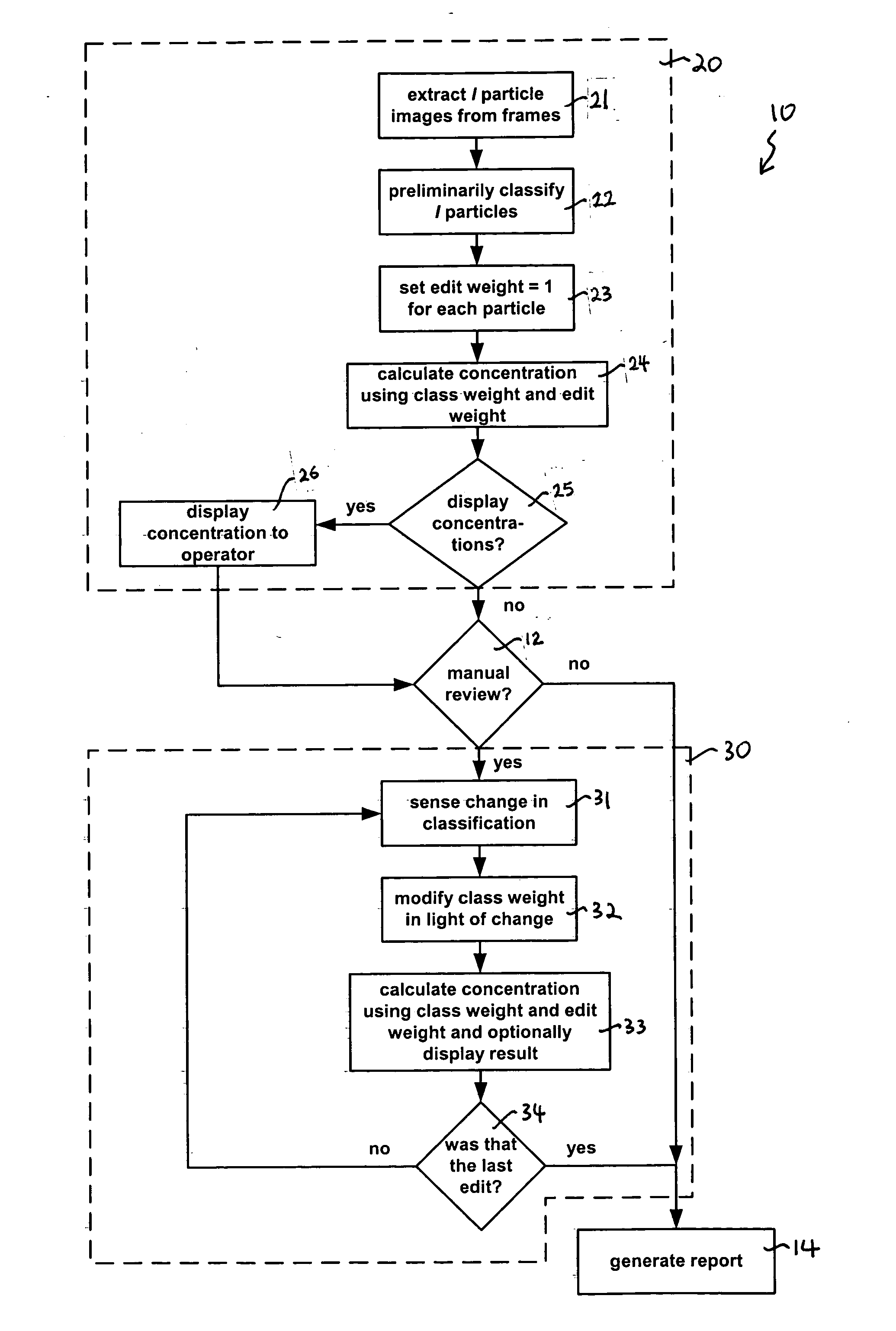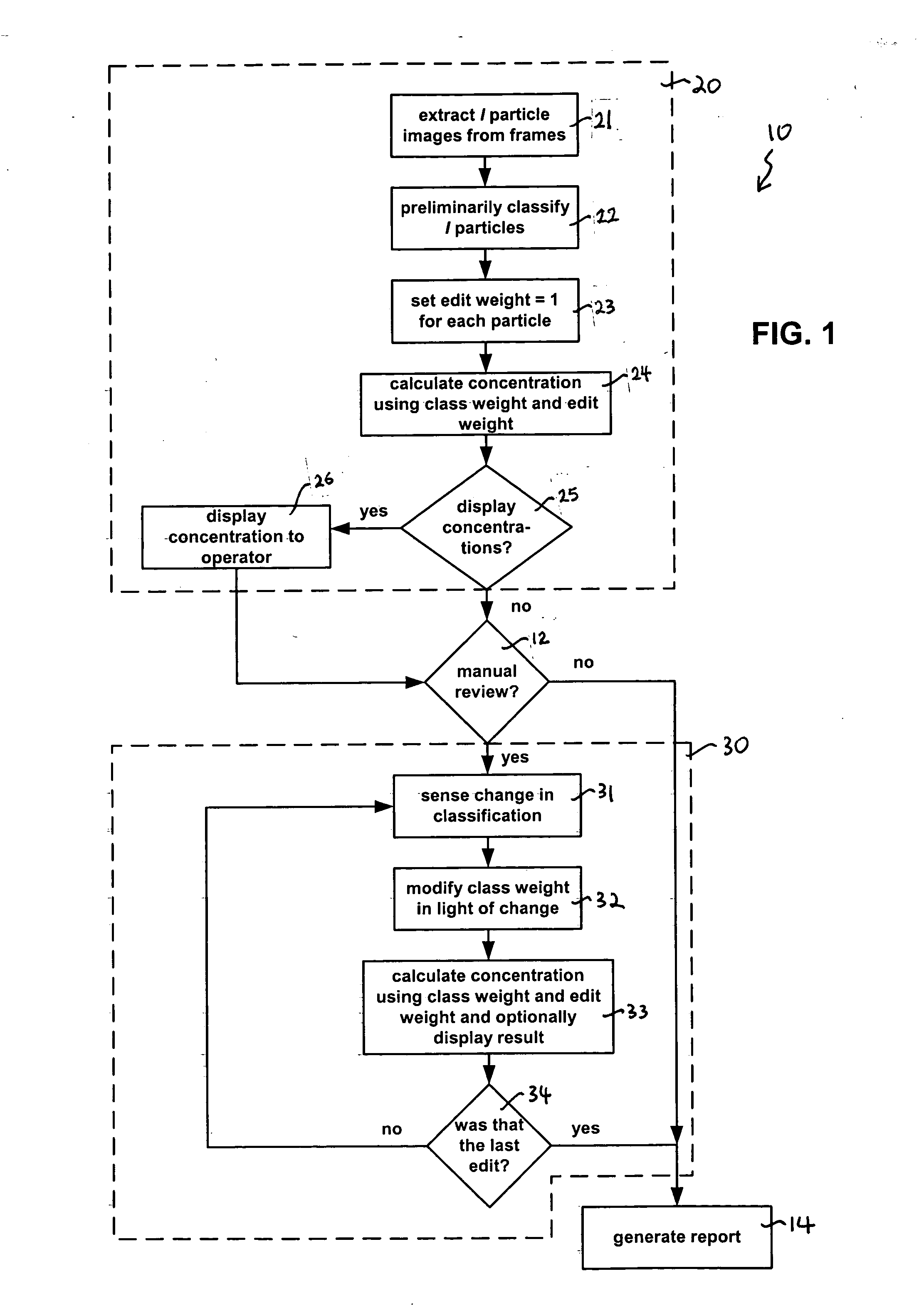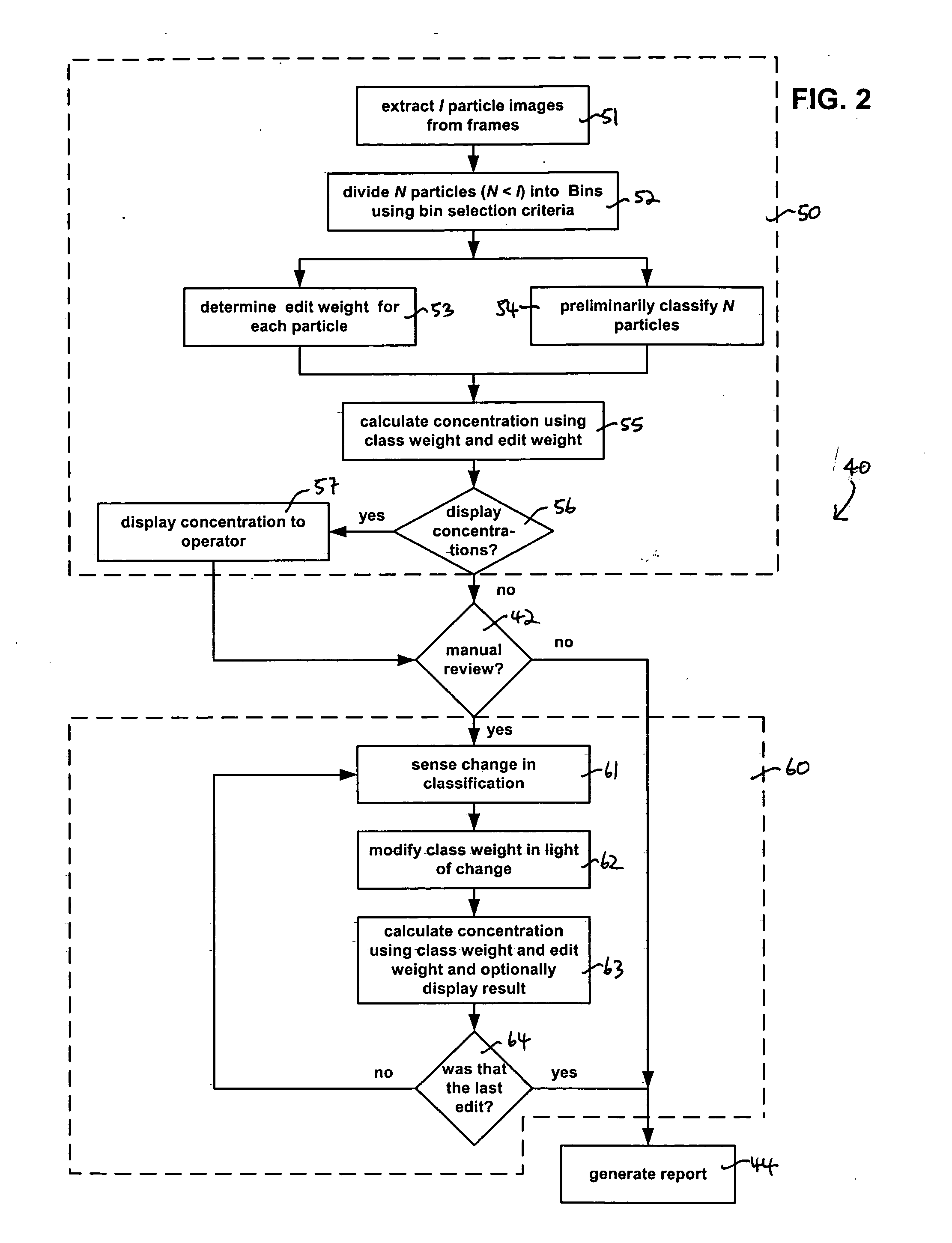Fluid sample analysis using class weights
- Summary
- Abstract
- Description
- Claims
- Application Information
AI Technical Summary
Benefits of technology
Problems solved by technology
Method used
Image
Examples
example 1
This example illustrates the effect of reclassification on class weight and concentration. Suppose there is a three-class system having class R, class W, class C, and an artifact class. Suppose also that CWR=2, CWW=1.5, and CWC=4. After the APR process, there are 40 particles in class R, 20 particles in class W, 5 particles in class C, and 50 particles in the artifact class per unit volume. The total number of particles (N) is 115. The initial concentrations should be as follows:
CR=2×40=80 particles / volume
CW=1.5×20=30 particles / volume
CC=4×5=20 particles / volume.
Assuming REF=1 and using Equation (1) and Equation (2) provided above:
CR=CWR, New×Σ(Class)EW={[2(115−3)+3] / 115}×41=80.93 particles / volume
CW=CWW, New×Σ(Class)EW={[1.5(115−3)+3] / 115}×19=28.25 particles / volume
CC=CWC, New×Σ(Class)EW={[4(115−3)+3] / 115}×5=19.6 particles / volume
The reclassification results show that there is no dramatic change in concentration by moving one particle (overall result of the three moves being reclassi...
example 2
This example illustrates the effect of classifying particles that were originally classified in the artifact class. The same initial conditions are assumed as in Example 1. During reclassification, five artifacts are moved to class C. Again assuming REF=1 and using Equations (1) and (2), the new concentrations are as follows:
CR=CWR, New×Σ(Class)EW={[2(115−5)+5] / 115}×40=78.26 particles / volume
CW=CWW, New×Σ(Class)EW={[1.5(115−5)+5] / 115}×20=29.56 particles / volume
CC=CWC, New×Σ(Class)EW={[4(115−5)+5] / 115}×10=38.7 particles / volume
Moving five artifacts into class C almost doubled the concentration of class C.
An Alternative Method
Now, an alternative method for recalculating the class weight and concentration will be presented. The preliminary classification steps are the same for this alternative method as for the method descried above.
In this alternative method, decreasing of the class weight is preferably performed using the following equation: {CWn=1|CW=1CWn=Maximum (1,[∑{Class...
example3
This example illustrates the effect of reclassification on class weight and concentration using Equations (3), (4), and (5). Suppose the same initial conditions as that provided above in Example 1. If the operator reclassification moves two of the particles that were originally in class W to class R and one of the particles in class R to class W (total number of reclassified particles=3), the class weights do not change, per situation iii) described above. Using the same class weights and REF=1, the concentrations calculated with Equation (5) are as follows:
CR=2×41 =82 particles / volume
CW=1.5×19=28.5 particles / volume
CC=4×5=20 particles / volume
PUM
 Login to View More
Login to View More Abstract
Description
Claims
Application Information
 Login to View More
Login to View More - R&D
- Intellectual Property
- Life Sciences
- Materials
- Tech Scout
- Unparalleled Data Quality
- Higher Quality Content
- 60% Fewer Hallucinations
Browse by: Latest US Patents, China's latest patents, Technical Efficacy Thesaurus, Application Domain, Technology Topic, Popular Technical Reports.
© 2025 PatSnap. All rights reserved.Legal|Privacy policy|Modern Slavery Act Transparency Statement|Sitemap|About US| Contact US: help@patsnap.com



